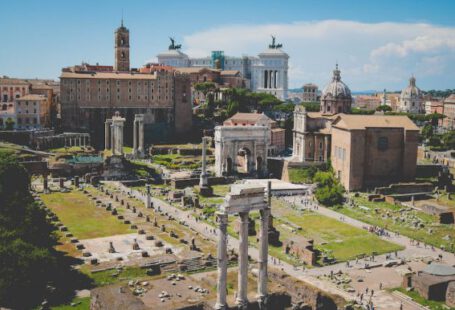Central heating systems are an essential part of modern life, providing warmth and comfort during cold winter months. But have you ever wondered how this technology came to be? In this article, we will take a trip back in time to explore the world’s oldest central heating systems, marveling at the ingenuity of our ancestors.
The Ancient Romans: Masters of Underfloor Heating
When it comes to central heating, the Ancient Romans were far ahead of their time. They were the pioneers of underfloor heating systems, known as hypocausts. These systems were first introduced in public baths and later became a common feature in wealthy Roman homes.
The hypocaust system worked by circulating hot air beneath the floors, creating a warm and cozy environment. The Romans achieved this by building a network of channels and ducts under the floors, which allowed hot air from a furnace to flow through. The floors were elevated on pillars or bricks to create a gap for the air to circulate.
The Byzantines: Innovators of Radiant Heating
While the Romans were masters of underfloor heating, it was the Byzantines who introduced the concept of radiant heating. In the 6th century, the Byzantines developed a system known as the hypocaustum, which used a series of pipes to circulate hot air or steam throughout a building.
The hypocaustum was a significant advancement in central heating technology. It allowed heat to be distributed more evenly, heating both the air and the objects in the room. This innovation provided a more comfortable and efficient heating solution compared to the Roman hypocausts.
The Koreans: Ondol, the Ancient Underfloor Heating System
In East Asia, the Koreans developed their own unique central heating system called Ondol. The Ondol system dates back over 2,000 years and is still used in some rural areas of Korea today.
Ondol, meaning “warm stone,” is an underfloor heating system similar to the Roman hypocausts. It utilizes a series of flues and ducts beneath the floor to circulate hot air, generated from a fire or stove. The floor is made of stone, which absorbs and radiates the heat, creating a comfortable living space.
The Islamic World: Ancient Innovations in Central Heating
During the Islamic Golden Age, which spanned from the 8th to the 14th centuries, the Islamic world made significant contributions to the development of central heating systems. They introduced several innovations, including the use of water as a heating medium.
One notable example is the Alhambra, a palace complex in Granada, Spain. The Alhambra featured an advanced central heating system known as the qanat. This system used a series of underground channels to distribute hot water, providing warmth to various parts of the palace.
Conclusion: A Testament to Human Ingenuity
Exploring the world’s oldest central heating systems is a testament to human ingenuity and our constant quest for comfort and convenience. From the Roman hypocausts to the Korean Ondol and the Islamic qanat, these ancient technologies laid the foundation for the central heating systems we enjoy today.
As we marvel at the advancements of our ancestors, let us also appreciate the modern central heating systems that keep us warm and cozy during the chilly winter months. Our pursuit of comfort and innovation is a timeless endeavor that connects us to our past and propels us into the future.





